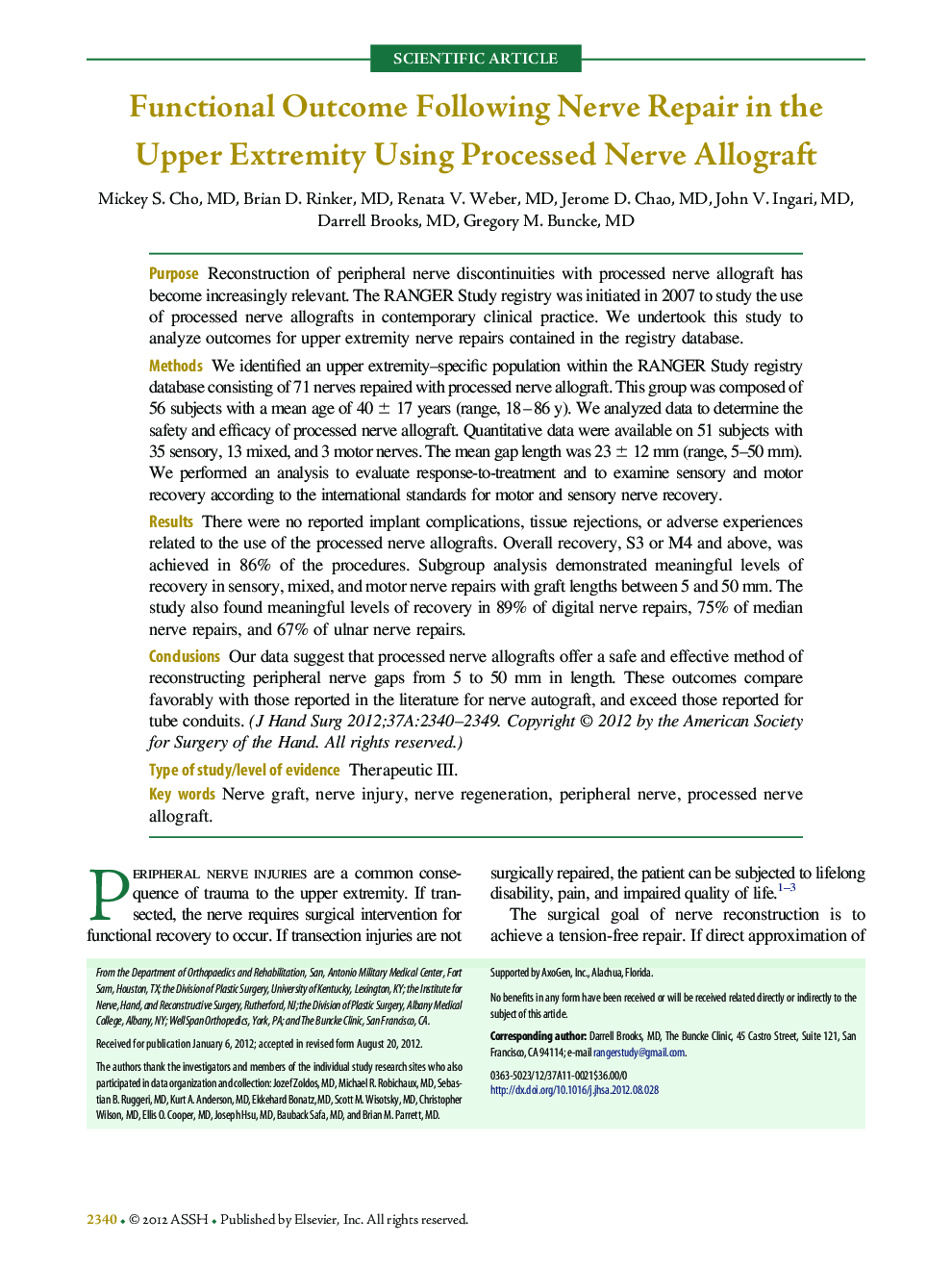| کد مقاله | کد نشریه | سال انتشار | مقاله انگلیسی | نسخه تمام متن |
|---|---|---|---|---|
| 4066585 | 1604389 | 2012 | 10 صفحه PDF | دانلود رایگان |

PurposeReconstruction of peripheral nerve discontinuities with processed nerve allograft has become increasingly relevant. The RANGER Study registry was initiated in 2007 to study the use of processed nerve allografts in contemporary clinical practice. We undertook this study to analyze outcomes for upper extremity nerve repairs contained in the registry database.MethodsWe identified an upper extremity–specific population within the RANGER Study registry database consisting of 71 nerves repaired with processed nerve allograft. This group was composed of 56 subjects with a mean age of 40 ± 17 years (range, 18–86 y). We analyzed data to determine the safety and efficacy of processed nerve allograft. Quantitative data were available on 51 subjects with 35 sensory, 13 mixed, and 3 motor nerves. The mean gap length was 23 ± 12 mm (range, 5–50 mm). We performed an analysis to evaluate response-to-treatment and to examine sensory and motor recovery according to the international standards for motor and sensory nerve recovery.ResultsThere were no reported implant complications, tissue rejections, or adverse experiences related to the use of the processed nerve allografts. Overall recovery, S3 or M4 and above, was achieved in 86% of the procedures. Subgroup analysis demonstrated meaningful levels of recovery in sensory, mixed, and motor nerve repairs with graft lengths between 5 and 50 mm. The study also found meaningful levels of recovery in 89% of digital nerve repairs, 75% of median nerve repairs, and 67% of ulnar nerve repairs.ConclusionsOur data suggest that processed nerve allografts offer a safe and effective method of reconstructing peripheral nerve gaps from 5 to 50 mm in length. These outcomes compare favorably with those reported in the literature for nerve autograft, and exceed those reported for tube conduits.Type of study/level of evidenceTherapeutic III.
Journal: The Journal of Hand Surgery - Volume 37, Issue 11, November 2012, Pages 2340–2349